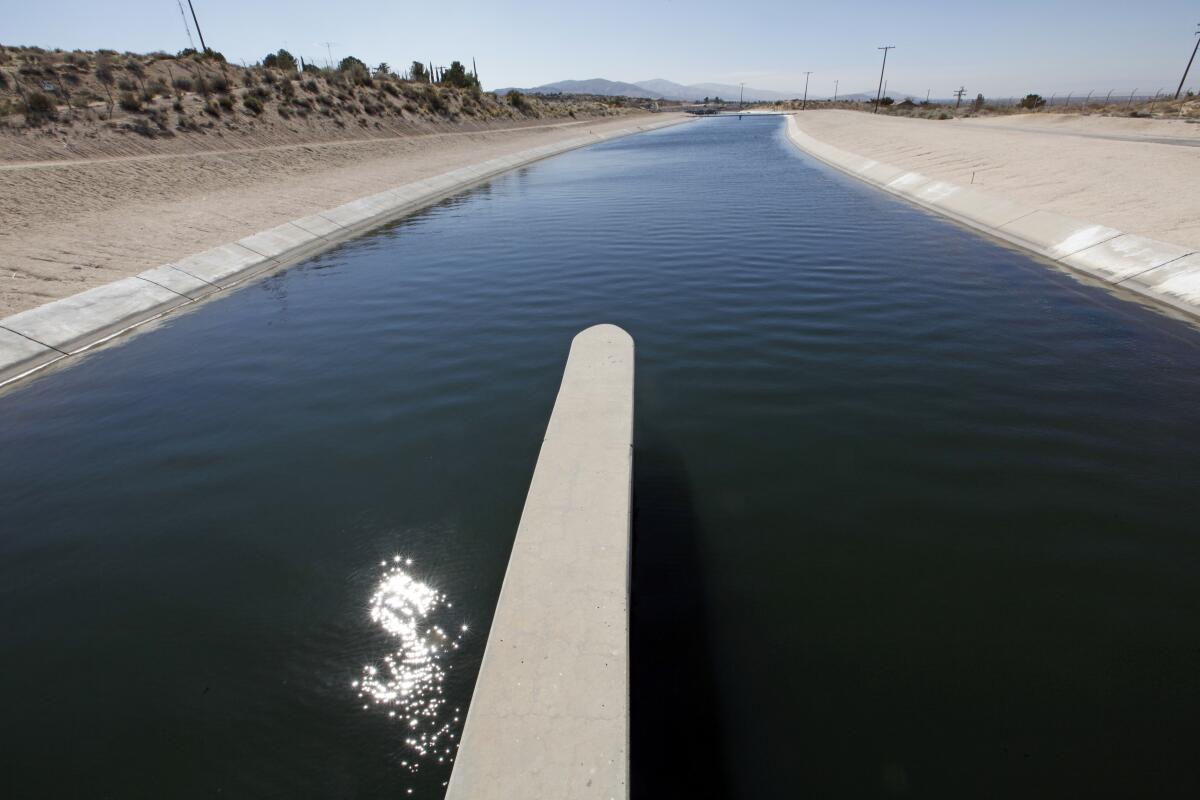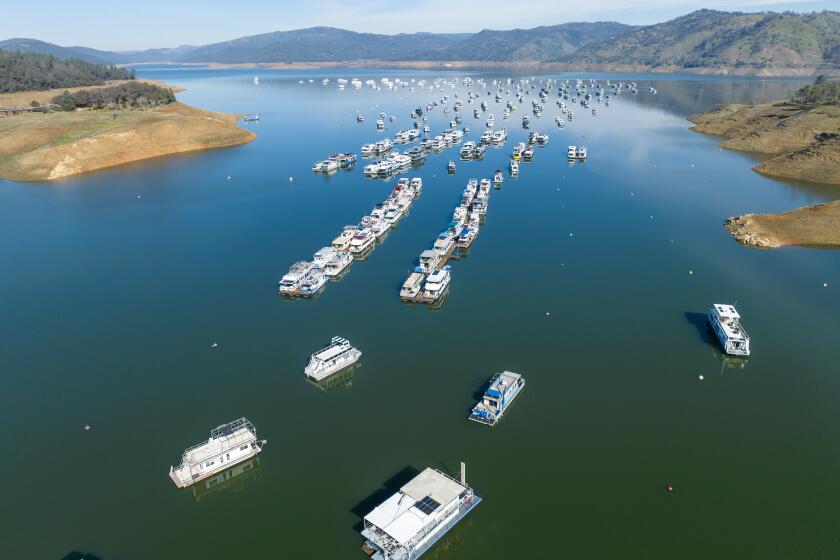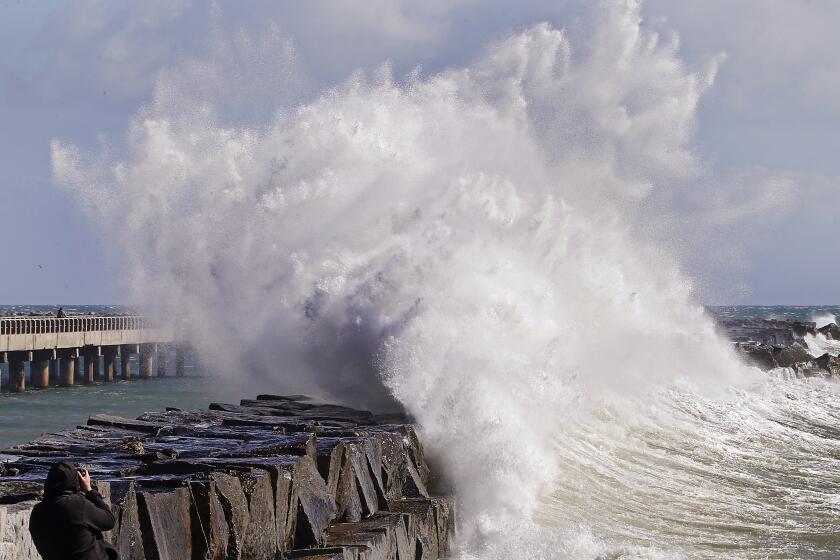On eve of storms, California water authorities boost State Water Project allocation to 35%

- Share via
As California braced for yet another round of winter storms Wednesday, state water officials announced that they were again boosting supplies for water agencies that serve 27 million residents.
The Department of Water Resources said it now expects to deliver 35% of requested water supplies — up from the 30% announced last month — via the State Water Project. The DWR said the modest increase was due to early gains in the Sierra Nevada snowpack and amounted to an additional 210,000 acre-feet of water.
“We’re hopeful that more storms this week are a sign that the wet weather will return, but there remains a chance that 2023 will be a below average water year in the northern Sierra,” said DWR Director Karla Nemeth. “Careful planning and the use of advanced forecasting tools will enable the department to balance the needs of our communities, agriculture and the environment should dry conditions continue this spring and into next year.”
As California grapples with worsening climate extremes, officials warn that recent storms don’t add up to an end to the drought.
The State Water Project is a complex system of reservoirs, canals and dams that is a major component of California’s water system. DWR officials cautioned that the allocation could be adjusted back down if extremely dry conditions warrant.
Late last month — and less than two months after the Department of Water Resources said it could give only 5% of requested supplies in 2023 — the department increased its allocation to 30%. At the time, officials said the allocation could change as the rest of the wet season develops.
The news marked a significant turnaround for California, which has been mired in extreme drought for more than three years. Last year’s final allocation was just 5%.
While it’s been more than three years since the state has issued an allocation of 30% or more, the number is still only about half of the average allocation. It’s been nearly two decades since the department issued a 100% allocation in April 2006.
Snow has already started to fall in the Antelope Valley, and forecasters are warning of possible dangerous conditions that could last through Sunday.
Wednesday’s announcement came on the same day that the Federal Bureau of Reclamation set similar allocations for Central Valley Project contractors.
The federal allocations reflect wet conditions that started the year. However, authorities said that not all river basins were equally improved, and Shasta Reservoir was still below its average capacity. “Adequate water elevations in Shasta Reservoir are crucial to ensuring deliveries to agricultural contractors and wildlife refuges,” read a press statement. “It also ensures enough cold water exists for spawning salmon later in the year.”
“Three years of record-setting drought in California will take some time to recover from,” said Reclamation Regional Director Ernest Conant. “In the short-term, the early winter storms have helped, but in the long-term, we still have much catching up to do, especially in the northern part of our system.”
The Central Valley Project stretches about 400 miles from the Redding area to the southern end of the San Joaquin Valley, with 20 dams and about 500 miles of main canals. The project pumps water from the Sacramento-San Joaquin River Delta near the intakes of the SWP.
More to Read
Sign up for Essential California
The most important California stories and recommendations in your inbox every morning.
You may occasionally receive promotional content from the Los Angeles Times.













